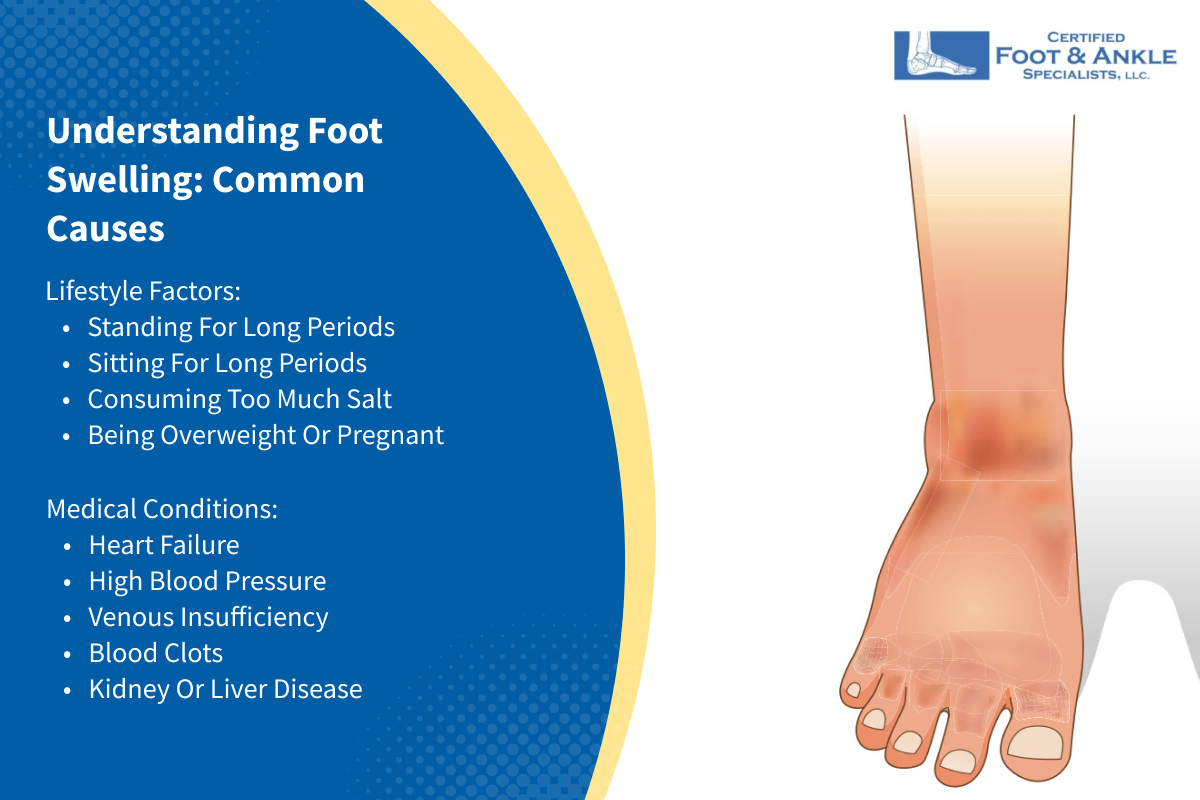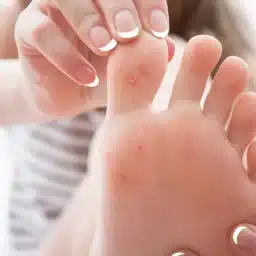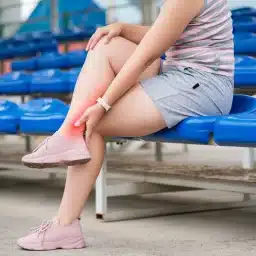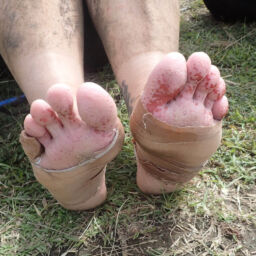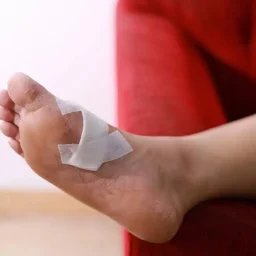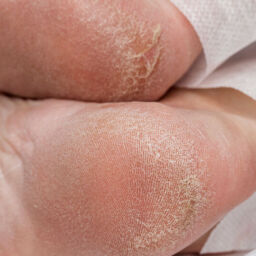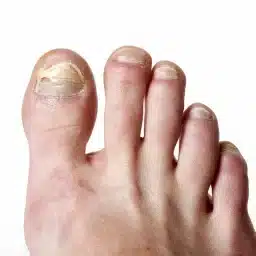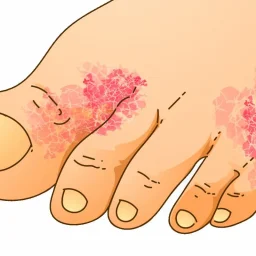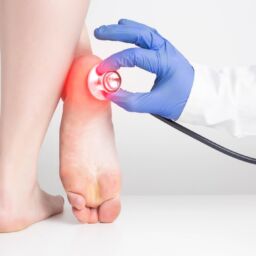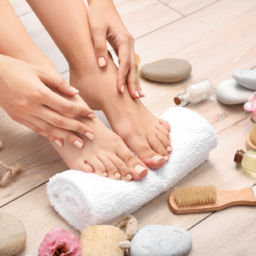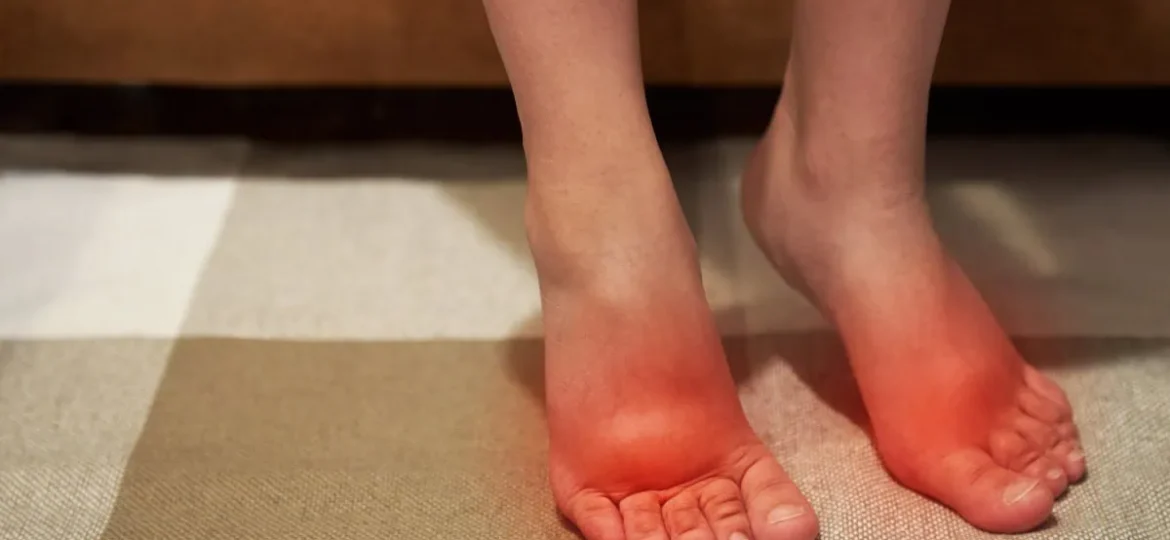
As board-certified podiatrists at Certified Foot and Ankle Specialists, we frequently see patients struggling with swollen feet across our 14 convenient locations. This uncomfortable condition affects millions of people daily. Whether you’re experiencing occasional puffiness or persistent foot swelling, understanding how to reduce swelling in feet effectively can provide relief and improve your quality of life.
With 15 experienced doctors and years of collective practice, we’ve helped countless patients manage foot swelling successfully. Let us share the most effective methods we recommend to our patients.
Understanding Foot Swelling: What Causes It?
Swelling in your feet occurs when excess fluid builds up in the tissues. This condition, medically known as edema, can result from various factors. Our foot specialists categorize these causes into two main groups:
Lifestyle Factors
In our practice locations, we often see foot swelling caused by daily habits:
- Standing for long periods without breaks (retail workers, nurses, teachers)
- Sitting for long periods of time during travel or desk work
- Consuming too much salt in your diet
- Being overweight, which increases pressure on your feet and ankles
- Pregnancy, especially in the third trimester
Medical Conditions
More serious causes require immediate attention from our podiatrists or your physician:
- Heart failure, which affects your body’s ability to pump blood effectively
- High blood pressure that strains your cardiovascular system
- Venous insufficiency, where veins struggle to return blood flow to your heart
- Blood clots that block proper circulation
- Kidney or liver disease affecting fluid regulation
- Diabetes-related complications
Recognizing these causes helps our doctors determine the best treatment approach on how to reduce swelling in feet for each patient.
Effective Methods to Reduce Swelling in Feet
1. Elevation and Rest
The simplest method we recommend to patients involves elevating their feet above heart level. Do this for 15-20 minutes several times a day. This position helps your body get rid of excess fluid more efficiently. Gravity assists blood flow back to your heart, reducing pooling in your lower extremities.
Pro tip from our practice: Place pillows under your feet while lying down, or use a footstool while sitting.
2. Cold Therapy
Apply ice packs wrapped in a cloth directly to swollen areas for 15-20 minutes at a time, several times throughout the day. This method is particularly effective during the first 48 hours after swelling begins. Cold therapy helps constrict blood vessels, reducing inflammation and providing immediate relief from discomfort.
Important note: Always wrap ice packs in a towel to prevent skin damage from direct cold exposure.
3. Compression Therapy
We frequently prescribe compression therapy for patients with chronic swelling. Wear compression socks or support stockings during the day, especially if you work jobs requiring extended standing. These garments apply gentle pressure that promotes circulation and prevents fluid from pooling in your feet and ankles.
What we tell our patients: Start with 15-20 mmHg compression for mild swelling. Severe cases may need prescription-strength compression.
3. Movement and Exercise
Regular movement prevents blood from stagnating in your lower extremities. We recommend simple exercises like ankle circles, calf raises, and walking. These activities help maintain healthy blood flow. Even brief walking breaks during long periods of sitting make a significant difference.
Our recommended routine:
- Ankle pumps: 10 repetitions every hour
- Calf raises: 15 repetitions, 3 times daily
- Walking: 10 minutes every 2 hours during work
4. Dietary Modifications
Reducing sodium intake helps your body manage fluid levels more effectively. We advise patients to focus on anti-inflammatory foods like leafy greens, berries, and omega-3 rich fish. These foods help reduce overall inflammation and swelling.
Essential nutrients for reducing swelling:
- Increase Potassium: This mineral helps balance sodium levels in your body. Include potassium-rich foods like bananas, sweet potatoes, spinach, and beans in your diet to naturally combat fluid retention.
- Ensure Adequate Magnesium: Magnesium helps relax blood vessels and reduce fluid retention. Consider magnesium-rich foods or supplements as recommended by your healthcare provider.
Foods we recommend: Spinach, blueberries, salmon, walnuts, cherries, bananas, sweet potatoes, and beans.
5. Proper Hydration
While it seems counterintuitive, drinking adequate water actually helps reduce swelling. Proper hydration supports your kidneys’ ability to eliminate excess sodium and waste products.
Our hydration rule: Aim for 8-10 glasses of water daily, unless you have heart or kidney conditions requiring fluid restrictions.
7. Lifestyle Adjustments
Limit Alcohol Consumption: Reduce or eliminate alcohol intake, as it can contribute to fluid retention and swelling. Alcohol affects your body’s ability to regulate fluid balance and can worsen existing swelling conditions.
When swelling persists despite these conservative measures, it’s important to consult with a podiatrist or healthcare provider to rule out underlying conditions that may require specialized treatment.
🚨 When to See a Podiatrist Immediately
As foot specialists with convenient locations throughout the area, we want patients to know when foot swelling requires urgent medical care. Contact one of our 14 offices or seek immediate medical attention if you experience:
- Becoming short of breath with minimal activity
- Chest pain or rapid heartbeat
- Severe or sudden onset of swelling
- Swelling accompanied by fever or skin changes
- One foot significantly more swollen than the other
- Pain, warmth, or redness in the swollen area
- Swelling that doesn’t improve with elevation after 24 hours
These symptoms could indicate serious conditions like heart failure, blood clots, or infections requiring immediate professional evaluation. Get the information on how to reduce swelling in your feet that is backed by certified podiatrists.
Professional Treatment Options at Certified Foot and Ankle Specialists
At our podiatric practice locations, our 15 experienced doctors provide comprehensive evaluation for persistent foot swelling. Our treatment approach includes:
- Thorough examination to identify underlying medical conditions
- Diagnostic testing when necessary (ultrasound, blood work)
- Prescription medications for severe cases
- Custom compression garment recommendations
- Personalized treatment plans based on your specific needs
- Regular monitoring and treatment adjustments
- Coordination with other specialists when needed
Schedule your consultation today or find our nearest foot and ankle clinical location by calling any of our 14 offices.
Prevention Strategies for Long-Term Relief
Preventing future episodes of foot swelling involves consistent lifestyle modifications that we discuss with every patient:
Daily Habits We Recommend
- Take regular breaks from standing or sitting every hour
- Maintain a healthy weight to reduce pressure on your feet
- Choose supportive, properly fitting footwear (our doctors can recommend specific brands)
- Stay hydrated while limiting excessive salt intake
- Elevate your feet whenever possible during the day
Exercise Routine
We encourage patients to incorporate low-impact activities like swimming, walking, or yoga. These promote circulation without placing excessive stress on your feet and ankles.
Monitoring Your Symptoms
Keep track of when swelling occurs to identify potential triggers or patterns. This information helps our doctors develop more effective treatment strategies during your visits.
Conclusion
Learning how to reduce swelling in feet involves combining immediate relief techniques with long-term prevention strategies. As board-certified podiatrists at Certified Foot and Ankle Specialists, we’ve seen firsthand across our 14 locations how proper treatment can dramatically improve patients’ quality of life.
While home remedies provide significant relief for minor swelling, persistent or severe symptoms warrant professional medical evaluation. Don’t ignore warning signs that could indicate serious underlying conditions.
Ready to find relief from foot swelling? Find your nearest location among our 14 convenient offices, or contact any of our locations directly to schedule your comprehensive evaluation. Our team of 15 experienced doctors specializes in diagnosing and treating all causes of foot and ankle swelling.
Remember, taking care of your feet is an investment in your overall health and mobility. With the right approach and professional guidance when needed, you can successfully manage foot swelling and maintain an active, comfortable lifestyle.
Visit certifiedfoot.com today to find your nearest location and book your appointment online. Same-day appointments available for urgent concerns at all 14 locations.
Frequently Asked Questions
How long does it take for foot swelling to go down?
In our experience across all practice locations, mild swelling from prolonged standing usually resolves within 2-4 hours with elevation and rest. Persistent swelling lasting more than 24 hours requires professional evaluation.
Are compression socks safe to wear daily?
Yes, properly fitted compression socks are safe for daily use. We recommend having them professionally fitted at any of our locations to ensure appropriate pressure levels.
What foods should I avoid if I have swollen feet?
Limit processed foods, canned soups, deli meats, and restaurant meals high in sodium. Our doctors provide detailed dietary guidelines during consultations.
Can diabetes cause foot swelling?
Absolutely. Diabetic patients are at higher risk for foot swelling due to circulation issues and potential heart complications. Regular podiatric care at one of our 14 locations is essential for diabetic foot health.
Quick Relief Checklist
✅ Elevate feet above heart level for 15-20 minutes
✅ Reduce salt intake immediately
✅ Take walking breaks every hour
✅ Drink adequate water throughout the day
✅ Wear compression socks if available
✅ Monitor symptoms and note triggers
